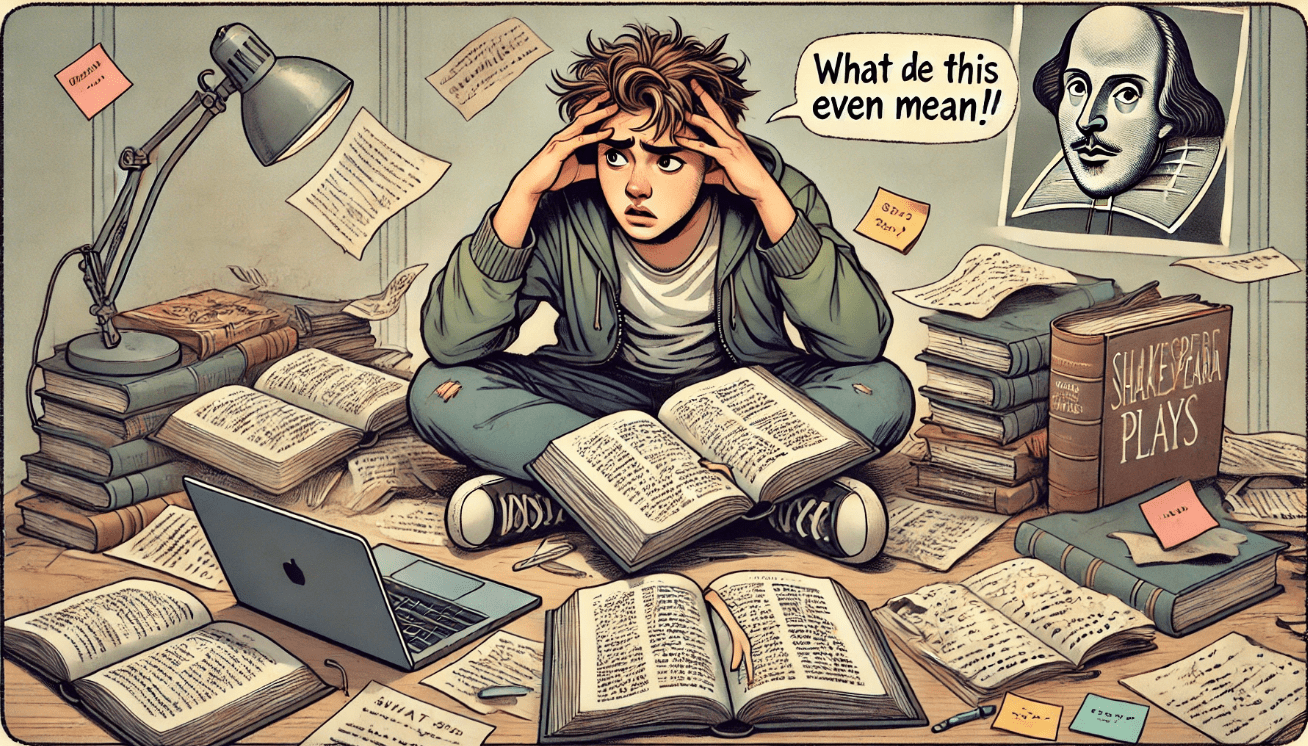
Mastering Character-Driven Soliloquies in Shakespeare’s Tragedies: A Guide to Analysis and Interpretation
Why do Shakespeare’s most tragic characters speak their deepest truths when no one else is listening? 🎭 Character-driven soliloquies in Shakespeare’s tragedies aren’t just dramatic pauses—they’re emotional X-rays, revealing the raw conflicts and inner turmoil that drive the plot. Yet, many readers and viewers miss how these powerful monologues shape the character’s journey and the story’s outcome. If you’ve ever wondered why Hamlet hesitates or what really breaks Macbeth, this article is your gateway to unlocking those answers. Get ready to explore how Shakespeare’s soliloquies hold the key to understanding his darkest, most unforgettable characters.
Table of Contents
Toggle1: What Are Character-Driven Soliloquies?
Character-driven soliloquies are moments in Shakespeare’s tragedies when a character speaks their thoughts aloud—usually alone on stage—revealing their inner struggles, motivations, and desires. Unlike dialogue, which involves interaction with others, soliloquies are private, raw, and deeply personal. 🎭
These speeches aren’t just poetic flourishes—they’re powerful storytelling tools. They help us understand why a character makes certain choices and how their internal conflict drives the plot forward. For example, Hamlet’s “To be or not to be” isn’t just famous—it’s a window into his existential crisis and fear of action.
In tragedies like Macbeth, Othello, and King Lear, soliloquies give us front-row access to a character’s evolving mindset. They show hesitation, guilt, ambition, jealousy, or regret—all the emotions that lead to tragic outcomes.
💡 Why it matters: If you want to truly understand Shakespeare’s characters—not just what they do, but why—studying their soliloquies is essential. They’re the heartbeat of the tragedy.

By focusing on these monologues, you’ll gain insight into character psychology, dramatic structure, and the timeless human emotions that make Shakespeare’s work still resonate today.
2: Why Character-Driven Soliloquies Matter
Character-driven soliloquies are more than just famous quotes—they’re the emotional engines of Shakespeare’s tragedies. They matter because they reveal what no one else on stage can see: the true thoughts, fears, and desires of the character. 🧠💬
In a play full of action and dialogue, these moments slow everything down. They give us a chance to step inside the character’s mind. This helps us understand why Hamlet delays his revenge, why Macbeth spirals into madness, or why Othello loses trust in Desdemona.
Without these inner monologues, we’d only see what the characters do—not what they feel. That difference is crucial. It makes the tragedy more relatable, more powerful, and more human.
💡 Why it’s useful for you: Whether you’re a student writing an essay, a teacher planning a lesson, or a performer preparing for a role, understanding soliloquies helps you go deeper. It improves your analysis, interpretation, and appreciation of Shakespeare’s work.
3: Key Examples of Character-Driven Soliloquies 🗝️🎭
Understanding character-driven soliloquies is all about recognizing how Shakespeare reveals the inner lives of his tragic heroes. These moments aren’t just poetic speeches—they’re windows into the character’s mind, filled with conflict, desire, and revelation.
Let’s break down some of the most iconic soliloquies in Shakespeare’s tragedies, and see what makes them powerful tools for character development and interpretation.
🧠 “To be, or not to be” – Hamlet (Hamlet, Act 3, Scene 1)

Why it matters:
This is the ultimate soliloquy about internal conflict. Hamlet isn’t just pondering life and death—he’s wrestling with action vs. inaction, fear vs. courage, and his crumbling sense of purpose.
Actionable Insight:
Look for how Hamlet questions himself instead of declaring answers. This uncertainty drives the whole tragedy and helps us understand why he delays avenging his father.
Pro tip: When analyzing, highlight Hamlet’s use of questions, metaphors about death (“the undiscover’d country”), and how his mood shifts mid-speech.
🔥 “Is this a dagger which I see before me” – Macbeth (Macbeth, Act 2, Scene 1)
Why it matters:
This soliloquy is a masterclass in psychological breakdown. Macbeth hallucinates a dagger leading him to murder King Duncan—proof that his ambition is overpowering his morality.
Actionable Insight:
Focus on the imagery. The dagger is a symbol of Macbeth’s guilt, temptation, and fate. The soliloquy builds tension as he moves from hesitation to decision.
Pro tip: Notice how Shakespeare uses short, urgent lines and violent imagery to show Macbeth’s unraveling mind.
👑 “O, that this too too solid flesh would melt” – Hamlet (Hamlet, Act 1, Scene 2)
Why it matters:
This is Hamlet’s first soliloquy, and it sets the emotional tone for the entire play. He expresses deep grief, disgust with his mother’s remarriage, and suicidal thoughts.
Actionable Insight:
Pay attention to the emotional contrast—Hamlet swings between grief, anger, and philosophical thought. His melancholy shapes how we see him from the start.
Pro tip: Explore the imagery of decay and corruption—they signal Hamlet’s view of a morally broken world.
🗡️ “O, full of scorpions is my mind, dear wife!” – Macbeth (Macbeth, Act 3, Scene 2)
Why it matters:
Though not a full soliloquy, this private speech to Lady Macbeth gives us a chilling look at Macbeth’s paranoia and deepening obsession with power.
Actionable Insight:
This line reveals Macbeth’s internal torment—he’s not at peace after becoming king. Instead, he’s anxious, aggressive, and planning more violence.
Pro tip: Use this speech to show how Macbeth’s character evolves after his first murder. He’s no longer hesitant—he’s becoming ruthless.
🩸 “Yet do I fear thy nature” – Lady Macbeth (Macbeth, Act 1, Scene 5)
Why it matters:
Lady Macbeth’s soliloquy gives us a bold look at her ambition and manipulation. She fears Macbeth is “too full o’ the milk of human kindness” to seize the throne.
4: How to Analyze Character-Driven Soliloquies 🔍🎭
Analyzing a Shakespearean soliloquy might seem intimidating—but it doesn’t have to be! 😊 Once you know what to look for, these speeches become powerful tools for understanding character, emotion, and dramatic tension.
Here’s a simple, step-by-step method you can use to analyze any character-driven soliloquy effectively.
1. Start With the Context 🗓️
Ask: What’s happening in the story when this soliloquy takes place?

- Where is the character in the plot?
- What just happened before the soliloquy?
- What decisions or emotions are building up?
Why it matters: The soliloquy often reveals the turning point in a character’s mindset. Without context, the speech loses its emotional weight.
2. Identify the Core Emotion ❤️
Ask: How is the character feeling, and why?
Look for:
- Grief, rage, guilt, fear, ambition, love
- Shifts in tone (e.g., from hopeful to hopeless)
Pro tip: Even complex soliloquies often center around one key emotion. Identifying it unlocks the character’s motivation.
3. Track the Thought Progression 🧠➡️💡
Ask: How does the character’s thinking evolve?
Break the soliloquy into 2–4 parts:
- Beginning: What’s the problem?
- Middle: How do they process it?
- End: What decision or realization do they reach?
Why it matters: Shakespeare’s characters often talk themselves into or out of something during a soliloquy. Follow that journey.
4. Zoom in on Language and Imagery 🖋️🎨
Ask: What specific words or metaphors stand out?
Look for:
- Repetition (emphasizes obsession or confusion)
- Symbolism (e.g., daggers, blood, darkness)
- Juxtaposition (contrasting ideas side by side)
Pro tip: Shakespeare uses imagery to reflect inner conflict. When the mind is messy, the language is too—use that to guide your analysis.
5. Listen for the Rhythm and Tone 🎶🎤
Ask: Does the character sound calm, frantic, angry, or broken?
Check for:
- Short, choppy lines = tension or panic
- Long, flowing lines = reflection or control
- Shifts in tone = emotional rollercoasters
Bonus Tip: Reading it aloud helps! You’ll feel the emotional rhythm that isn’t obvious on the page.
📖 5: Practical Applications for Students and Enthusiasts
Mastering character-driven soliloquies in Shakespeare’s tragedies isn’t just for academics — students, drama enthusiasts, and casual readers can all benefit from these timeless speeches. Here’s how you can actively apply your understanding to make Shakespeare’s soliloquies both accessible and meaningful.

🎭 1️⃣ Perform Soliloquies Out Loud
One of the best ways to grasp a soliloquy’s emotion and intention is by speaking it aloud. Shakespeare’s language was designed for the stage, and many nuances only reveal themselves through voice and pacing.
Tips to try:
- Read slowly and emphasize key emotional words.
- Play with tone, pitch, and pauses to reflect the character’s mood.
- Record yourself and listen back — notice where it feels natural or forced.
Why it works:
Hearing the words lets you connect emotionally with the character’s inner conflict and intentions.
✍️ 2️⃣ Keep a Soliloquy Journal
Jotting down thoughts while studying soliloquies can deepen your interpretation skills.
How to start:
- Write out the soliloquy by hand (it helps with memorization and focus).
- Note unfamiliar words or phrases and look them up.
- Summarize each line or section in plain, modern English.
- Reflect on what the character is feeling and why.
Bonus Idea:
Write a short modern-day version of the soliloquy in your own words!
🎥 3️⃣ Watch Different Stage and Film Versions
Seeing how various actors interpret the same soliloquy can open your eyes to multiple possible readings.
Where to look:
- YouTube 🎬
- National Theatre at Home
- BBC Shakespeare productions
- Local theater performances
What to observe:
- How does each actor deliver key lines?
- What emotions or motivations do they emphasize?
- How do gestures, facial expressions, and pacing change the meaning?
📚 4️⃣ Join a Shakespeare Reading Group or Workshop
Reading and discussing soliloquies with others can help you see interpretations you might not have considered. Many libraries, schools, and community theaters host open workshops or Zoom sessions.
Benefits:
- Learn from diverse viewpoints.
- Get feedback on your own performance.
- Discover new analytical techniques.
Tip:
Start with famous soliloquies like “To be, or not to be” (Hamlet) or “Is this a dagger which I see before me” (Macbeth) — they’re packed with accessible material for discussion.
💡 5️⃣ Use Digital Tools and Annotated Editions
Modern technology makes studying Shakespeare easier than ever.
Helpful tools:
- Shakespeare’s Words (online glossary)
- No Fear Shakespeare (modern translations side-by-side)
- Shakescleare by LitCharts
- YouTube breakdown videos for soliloquy explanations
Why use them?
They clarify difficult passages, highlight literary devices, and explain historical context — making analysis quicker and more enjoyable.
6: Common Challenges and How to Overcome Them
Studying and interpreting character-driven soliloquies in Shakespeare’s tragedies can feel intimidating — and you’re not alone if you’ve struggled with tricky language or confusing emotions. Let’s break down the most common hurdles and how you can confidently tackle them. 💪✨

🧐 Challenge #1: Understanding Archaic Language
The Problem:
Words like “wherefore”, “thy”, or “thou art” can stop you in your tracks and disrupt the flow of the soliloquy.
Solution:
- Keep an online Shakespeare glossary or annotated edition handy.
- Use tools like No Fear Shakespeare or Shakescleare for side-by-side modern translations.
- Focus on the overall emotion and intent first — don’t get stuck on every unfamiliar word.
Pro Tip:
Most Shakespearean words repeat across plays. The more you read, the easier it gets! 📖✨
🌀 Challenge #2: Interpreting Complex Emotions
The Problem:
Shakespeare’s characters often wrestle with conflicting feelings in a single soliloquy — making it tough to pin down their true emotions.
Solution:
- Break the soliloquy into smaller sections.
- Ask yourself after each part: Is the character angry, sad, hopeful, or afraid here?
- Highlight emotional shifts and turning points as you go.
Bonus Idea:
Act it out with different emotions to see which feels most natural. 🎭
📝 Challenge #3: Analyzing Literary Devices
The Problem:
Spotting metaphors, imagery, and wordplay can feel overwhelming if you’re new to literary analysis.
Solution:
- Start by identifying what stands out — unusual comparisons or vivid descriptions.
- Ask: What is this image saying about the character’s state of mind?
- Use annotated guides that explain devices line by line.
Quick Example:
In Macbeth’s “Is this a dagger…” soliloquy, the imaginary dagger is a symbol of his guilt and deadly ambition.
⏳ Challenge #4: Staying Focused During Long Soliloquies
The Problem:
Some soliloquies are long and dense, and it’s easy to lose track of what’s happening.
Solution:
- Break it into 3–5 sentence chunks.
- Write a one-sentence summary for each part.
- Highlight key turning points where the character’s mood or intention changes.
Helpful Tip:
Summarizing in your own words builds comprehension faster than passively reading. 📝✅
🎥 Challenge #5: Feeling Intimidated by Famous Performances
The Problem:
Legendary actors like Sir Ian McKellen or Kenneth Branagh have delivered iconic soliloquies — making students feel like they can’t measure up.
Solution:
- Remember, Shakespeare was meant for everyone — not just professionals.
- Focus on your personal connection to the words, not perfect delivery.
- Watch a few different performances to see how varied interpretations can be.
Encouragement:
There’s no “right” way to interpret a soliloquy — your voice matters. 🎙️😊
6: Common Challenges and How to Overcome Them
Studying and interpreting character-driven soliloquies in Shakespeare’s tragedies can feel intimidating — and you’re not alone if you’ve struggled with tricky language or confusing emotions. Let’s break down the most common hurdles and how you can confidently tackle them. 💪✨
🧐 Challenge #1: Understanding Archaic Language
The Problem:
Words like “wherefore”, “thy”, or “thou art” can stop you in your tracks and disrupt the flow of the soliloquy.
Solution:
- Keep an online Shakespeare glossary or annotated edition handy.
- Use tools like No Fear Shakespeare or Shakescleare for side-by-side modern translations.
- Focus on the overall emotion and intent first — don’t get stuck on every unfamiliar word.
Pro Tip:
Most Shakespearean words repeat across plays. The more you read, the easier it gets! 📖✨
🌀 Challenge #2: Interpreting Complex Emotions
The Problem:
Shakespeare’s characters often wrestle with conflicting feelings in a single soliloquy — making it tough to pin down their true emotions.
Solution:
- Break the soliloquy into smaller sections.
- Ask yourself after each part: Is the character angry, sad, hopeful, or afraid here?
- Highlight emotional shifts and turning points as you go.
Bonus Idea:
Act it out with different emotions to see which feels most natural. 🎭
📝 Challenge #3: Analyzing Literary Devices
The Problem:
Spotting metaphors, imagery, and wordplay can feel overwhelming if you’re new to literary analysis.
Solution:
- Start by identifying what stands out — unusual comparisons or vivid descriptions.
- Ask: What is this image saying about the character’s state of mind?
- Use annotated guides that explain devices line by line.
Quick Example:
In Macbeth’s “Is this a dagger…” soliloquy, the imaginary dagger is a symbol of his guilt and deadly ambition.
⏳ Challenge #4: Staying Focused During Long Soliloquies
The Problem:
Some soliloquies are long and dense, and it’s easy to lose track of what’s happening.
Solution:
- Break it into 3–5 sentence chunks.
- Write a one-sentence summary for each part.
- Highlight key turning points where the character’s mood or intention changes.
Helpful Tip:
Summarizing in your own words builds comprehension faster than passively reading. 📝✅
🎥 Challenge #5: Feeling Intimidated by Famous Performances
The Problem:
Legendary actors like Sir Ian McKellen or Kenneth Branagh have delivered iconic soliloquies — making students feel like they can’t measure up.
Solution:
- Remember, Shakespeare was meant for everyone — not just professionals.
- Focus on your personal connection to the words, not perfect delivery.
- Watch a few different performances to see how varied interpretations can be.
Bringing Shakespeare’s Soliloquies to Life

Mastering the art of analyzing character-driven soliloquies in Shakespeare’s tragedies isn’t just about memorizing famous lines — it’s about unlocking the heart of a character’s inner world 💭. These powerful moments give us rare access to a character’s private thoughts, conflicts, and emotional turning points.
By focusing on character motivation, language choices, emotional shifts, and symbolic imagery, you can reveal the deeper meanings within each soliloquy. Whether you’re a student, actor, or literature lover, applying these simple, structured techniques will help you engage with Shakespeare’s works in a fresh, insightful way ✨.
Frequently Asked Questions (FAQs)
1️⃣ What is a soliloquy in Shakespeare’s plays?
A soliloquy is a speech where a character speaks their private thoughts aloud, usually alone on stage. It reveals their true feelings, motives, and inner struggles directly to the audience.
2️⃣ Why are soliloquies important in Shakespeare’s tragedies?
Soliloquies offer deep insights into a character’s mind during key moments in the story. They help explain a character’s decisions, emotional conflicts, and moral dilemmas, making the plot more personal and engaging.
3️⃣ How do you analyze a character-driven soliloquy effectively?
Start by understanding the context of the scene, then identify key emotions, language techniques, and imagery. Look for shifts in tone and meaning, and connect the speech to the character’s overall journey in the play.
4️⃣ What are common themes found in Shakespeare’s soliloquies?
Typical themes include ambition, guilt, revenge, love, fate, madness, and moral conflict. These themes often reflect the character’s personal struggles and foreshadow upcoming events in the tragedy.
5️⃣ How can I tell if a soliloquy reveals a character’s true feelings?
Since soliloquies are spoken alone, they usually express the character’s honest emotions without the need to impress or deceive others. Pay attention to language shifts, metaphors, and contradictions for clues to deeper truths.
6️⃣ What’s the difference between a monologue and a soliloquy?
A monologue is a long speech by one character spoken to others on stage, while a soliloquy is delivered alone to reveal inner thoughts. Both are important, but soliloquies offer a more intimate look into a character’s mind.
7️⃣ Which are the most famous soliloquies in Shakespeare’s tragedies?
Well-known examples include “To be or not to be” from Hamlet, “Is this a dagger which I see before me” from Macbeth, and “O, that this too too solid flesh would melt” also from Hamlet. These speeches capture powerful emotional and moral conflicts.
8️⃣ Can soliloquies be performed or analyzed differently today?
Yes! Modern interpretations often highlight new meanings based on current social issues or psychological insights. Watching different performances and reading varied analyses can deepen your understanding of these timeless speeches.
